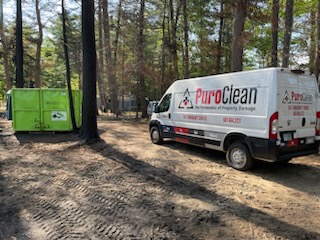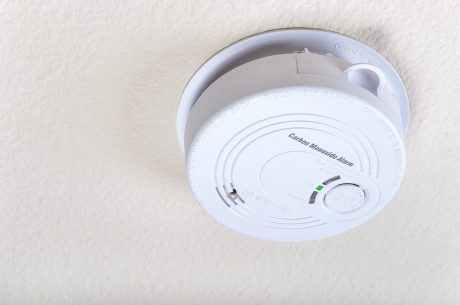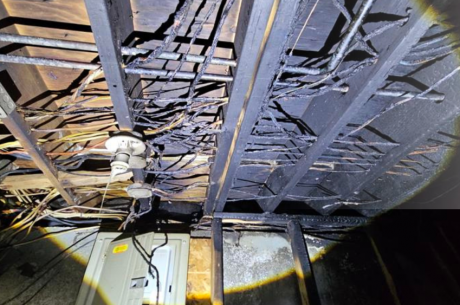When fire devastates a home or business, property owners face critical decisions that will shape their future. Should you demolish and rebuild, or can the structure be restored? Understanding fire damage demolition helps you make informed choices during one of life’s most stressful events.
Throughout Strafford County and the Seacoast region—including Manchester, Dover, Rochester, Portsmouth, Somersworth, and Exeter—residential and commercial fires create complex recovery challenges. Communities across Southern New Hampshire experience significant fire incidents annually, making professional demolition and restoration services essential for property owners facing these devastating events.

What Is Fire Damage Demolition?
Fire damage demolition involves the systematic tear-down and removal of fire-damaged structures that are unsafe or beyond practical repair. This specialized service goes beyond standard demolition—it requires expertise in handling smoke contamination, water damage, hazardous materials, and structural compromises unique to fire-affected properties.
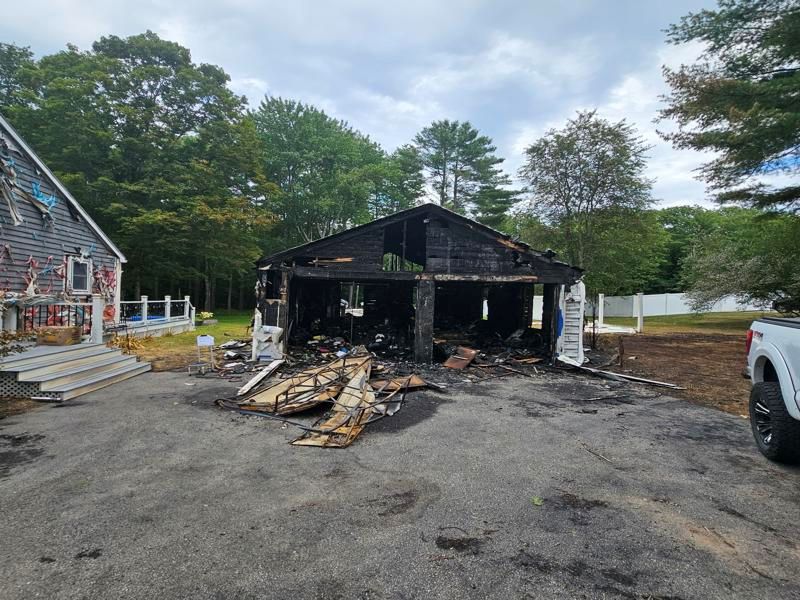

When Is Demolition Necessary After a Fire?
Complete Scenarios | Fire Damage Demolition
Structural Unsafety: Fire weakens support beams, warps steel, and cracks foundations. When building inspectors deem a structure unsafe, complete demolition becomes necessary to prevent collapse and ensure safety.
Restoration Costs Exceed Property Value: If repair estimates exceed 50-60% of the home’s value, demolition and rebuilding often makes more financial sense than attempting restoration.
Severe Smoke and Toxic Contamination: Modern building materials become toxic when exposed to fire. Smoke and soot infiltrate walls, insulation, and HVAC systems, creating health hazards that are sometimes impossible to fully remediate.
Extensive Water Damage from Firefighting: The water used to extinguish flames can saturate structural components, leading to mold growth within 24-48 hours and long-term deterioration of wood framing.
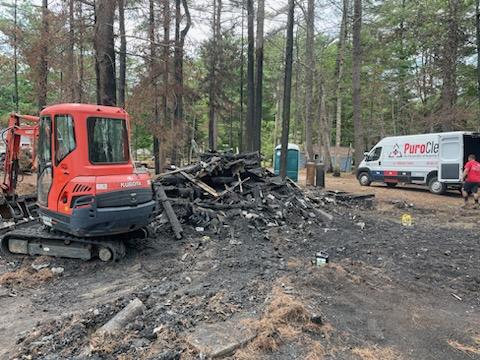
Selective Fire Damage Demolition Options
Not all fire damage requires complete tear-down. Selective demolition removes only compromised sections—such as a damaged garage or single room—while preserving structurally sound portions. This approach saves costs and accelerates rebuilding timelines.
Hidden Dangers That Justify Demolition
Compromised Structural Integrity
Fire damage extends far beyond visible charring. Heat travels through structural members, weakening them from within. Steel beams can warp, wooden supports lose load-bearing capacity, and foundations develop stress fractures—all potentially invisible until failure occurs.
Toxic Mold Growth
After firefighting efforts, moisture creates ideal conditions for mold. Within 24-48 hours, spores begin colonizing walls, insulation, and hidden cavities. Once established, mold poses serious health risks, particularly to children, seniors, and those with respiratory conditions. Complete eradication often requires demolition of affected building components.
Smoke Contamination and Persistent Odors
Smoke doesn’t just stain surfaces—it penetrates building materials at the molecular level. Soot particles embed in porous materials, releasing odors and toxins for years. Even after professional cleaning, smoke trapped inside walls, under floors, and within electrical conduit continues affecting air quality.
Hazardous Materials Exposure
Older homes may contain asbestos insulation, lead paint, or other materials that become dangerous when damaged by fire. Many municipalities require asbestos and lead testing before demolition work begins, followed by licensed abatement to protect workers and future occupants.
Key Questions Before Fire Damage Demolition
Assessing Damage Extent
What’s the true scope of damage? Visible damage tells only part of the story. Certified technicians use thermal imaging, moisture meters, and soot measuring equipment to detect hidden damage behind walls, within HVAC systems, and in areas appearing untouched. This comprehensive assessment prevents costly surprises during reconstruction.
Insurance Considerations
What does your policy cover? Understanding coverage limits, depreciation factors, and policy language determines your financial options. Professional restoration companies experienced with insurance claims provide detailed documentation that helps maximize settlements and expedite the process.
Have you documented everything? Systematic photo and video documentation before any demolition work begins creates an irrefutable record protecting your interests and supporting insurance claims.
Regulatory Compliance
What permits are required? Local regulations vary significantly. Many New Hampshire properties may face shoreline protection requirements, tree replacement mandates, flood zone regulations, or historic district considerations. Understanding these requirements before demolition prevents costly delays and compliance issues. State laws and local ordinances, such as demolition delay may apply depending on a structure’s historic significance.
Are there zoning restrictions? Setback requirements, lot coverage limits, and use restrictions may affect reconstruction options. Professional assessment identifies these factors early in the decision-making process.
The Fire Damage Demolition Process
1. Professional Inspection and Assessment
Certified technicians evaluate structural safety, document damage extent, and identify hazardous materials. This assessment determines whether selective or complete demolition is necessary.
2. Permitting and Regulatory Approval
Obtaining proper permits from local authorities ensures legal compliance. This step includes required inspections and hazardous material surveys.
3. Utility Disconnection
Safe shutdown of electrical, gas, water, and other utilities prevents accidents during demolition work.
4. Hazardous Material Abatement
Licensed professionals safely remove asbestos, lead, and other dangerous materials before structural demolition begins.
5. Systematic Demolition
Using specialized equipment, trained crews systematically tear down the structure while implementing dust control and safety measures.
6. Debris Removal and Recycling
Materials are sorted for recycling where possible and transported to permitted facilities. Scale tickets and disposal documentation are retained for insurance and regulatory purposes.
7. Site Cleanup and Preparation
The property is graded, cleared of debris, and prepared for reconstruction, providing a clean slate for the next phase.

Why Hire Fire Damage Demolition Specialists?
Specialized Equipment and Training
Fire damage demolition requires equipment and expertise that general contractors don’t possess. At PuroClean of Strafford County, our demolition operator Tyson brings specialized training and years of experience handling fire-damaged properties throughout New Hampshire and Southern Maine.
Professional fire demolition teams utilize:
- Thermal imaging cameras for hidden damage detection
- Air scrubbers and negative air fans for contamination control
- HEPA vacuum systems for particulate removal
- Moisture and soot measuring instruments
- Commercial dehumidifiers and fans
- Heavy equipment for safe, efficient structural tear-down
Insurance Claims Expertise
Restoration companies employ specialists who work daily with insurance adjusters. They understand policy language, documentation requirements, and settlement negotiation—expertise that expedites claims by weeks or months compared to general contractors unfamiliar with the insurance process.
Financial Capacity
Insurance restoration funds are released in stages following inspections. Specialized restoration companies maintain credit lines and financial reserves necessary for large-scale demolition projects before full payment is received—something most general contractors cannot accommodate.
Comprehensive Insurance Coverage
Fire damage work involves unique hazards requiring specialized insurance policies. Restoration contractors carry coverage for handling lead, asbestos, formaldehyde, chemicals, biohazards, and other dangerous materials that general contractors’ policies don’t address.
Signs Demolition Is Your Best Option
- Building inspector deems structure unsafe or condemns the property
- Restoration estimates reach or exceed 50% of pre-fire property value
- Persistent smoke odors and air quality issues remain after professional cleaning
- Extensive mold growth throughout multiple building systems
- Insurance coverage limits make partial restoration financially unviable
- Multiple structural systems (electrical, plumbing, HVAC, framing) are severely compromised
The Path Forward After Fire Demolition
While losing a home to fire is traumatic, demolition can be the first step toward renewal. A professional tear-down clears the way for safer, stronger, code-compliant reconstruction designed for modern living.
Serving Fire-Affected Communities Across Southern NH
Fire damage affects communities throughout our service area. From multi-family residential fires in Manchester to commercial property losses in Portsmouth, from devastating house fires in Dover to garage fires in Rochester, each incident requires specialized demolition expertise.
PuroClean of Strafford County serves property owners throughout:
- Strafford County: Dover, Rochester, Somersworth, Barrington, Durham, Farmington, Madbury, Middleton, Milton, New Durham, Rollinsford, and Strafford
- Rockingham County: Portsmouth, Exeter, Hampton, Derry, Salem, Londonderry, Plaistow, Seabrook, and surrounding communities
- Southern Maine: Kittery, York, Wells, South Berwick, and nearby towns
Our demolition operator Tyson and the entire PuroClean team understand the unique challenges each community faces, from historic building considerations in Portsmouth’s downtown to lakefront property regulations affecting Rochester and Somersworth waterfront homes.
Working with experienced fire damage demolition specialists ensures the process is handled safely, efficiently, and in compliance with all regulations. The right partner provides expert guidance, handles insurance documentation, manages hazardous materials, and delivers a clean, ready-to-build site.
Take the Next Step
Don’t navigate fire damage recovery alone. Professional assessment helps you understand your options, make informed decisions, and move forward with confidence. Whether your situation requires selective demolition or complete tear-down, experienced specialists provide the expertise needed to protect your interests and prepare for your property’s future.
PuroClean of Strafford County is ready to help property owners throughout Southern New Hampshire and Southern Maine recover from fire damage. Our demolition operator Tyson and certified restoration team bring the specialized training, equipment, and insurance expertise needed to handle even the most complex fire damage scenarios.
Available 24/7 for Emergency Response
Fire damage doesn’t follow a schedule. We provide rapid response throughout Strafford County, Rockingham County, and Southern Maine—serving Dover, Rochester, Portsmouth, Somersworth, Exeter, Manchester, Concord, and communities throughout the Seacoast region.
Contact PuroClean of Strafford County:
- 24/7 Emergency Line: (603) 664-3727
- Request an on-site assessment through our contact form
- Professional evaluation of your fire-damaged property
- Detailed documentation for insurance claims
- Expert guidance on demolition vs. restoration decisions
Let us handle the heavy lifting while you focus on planning your property’s future.
